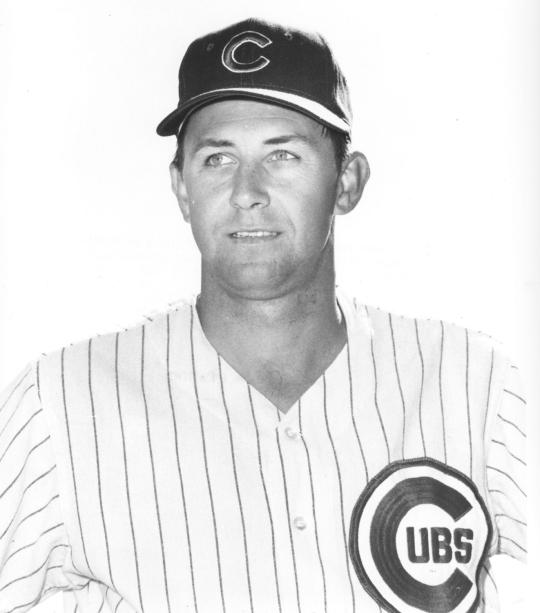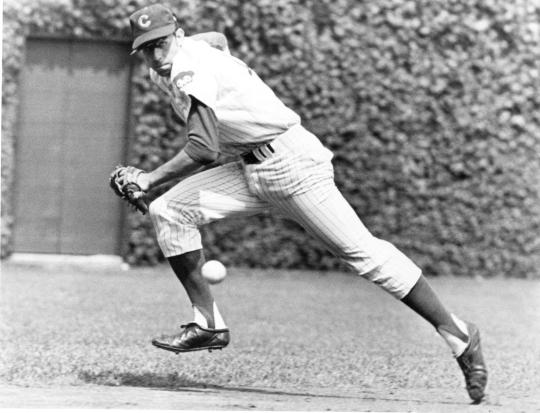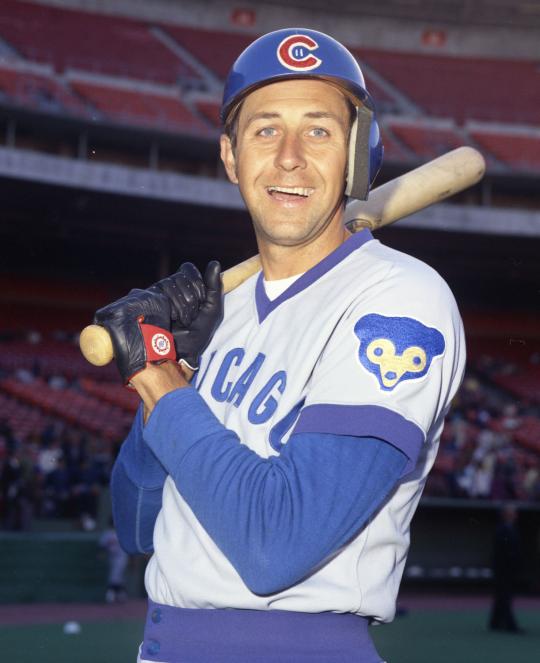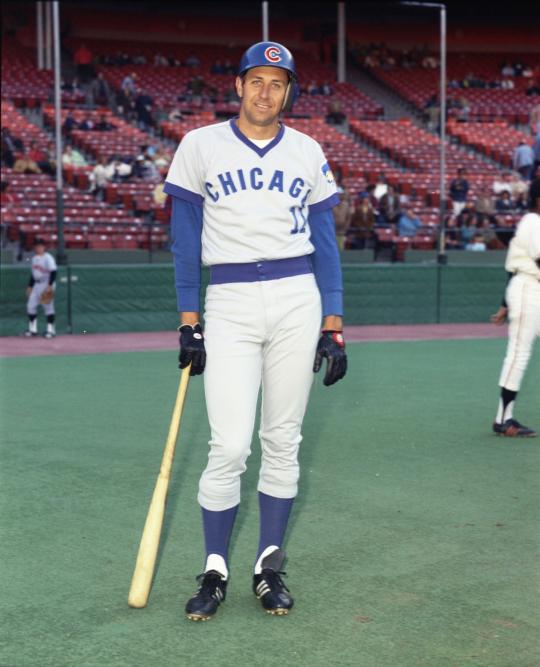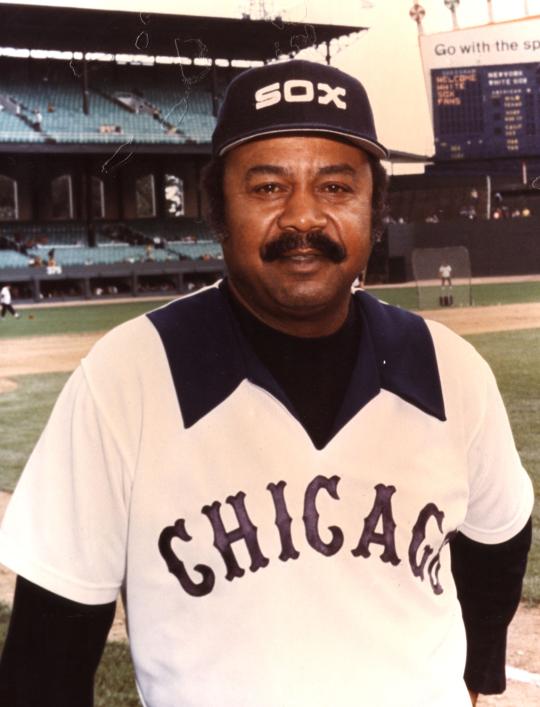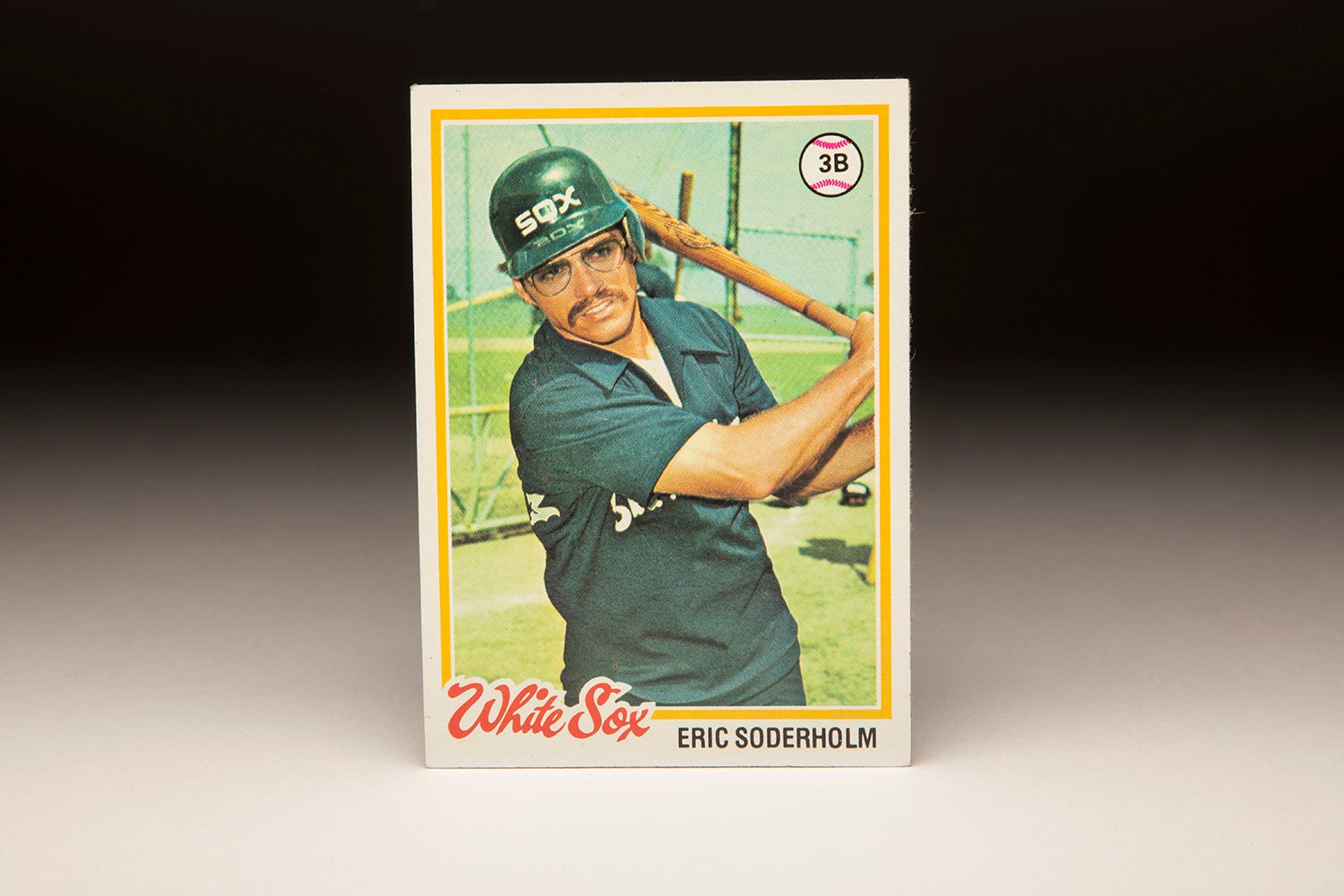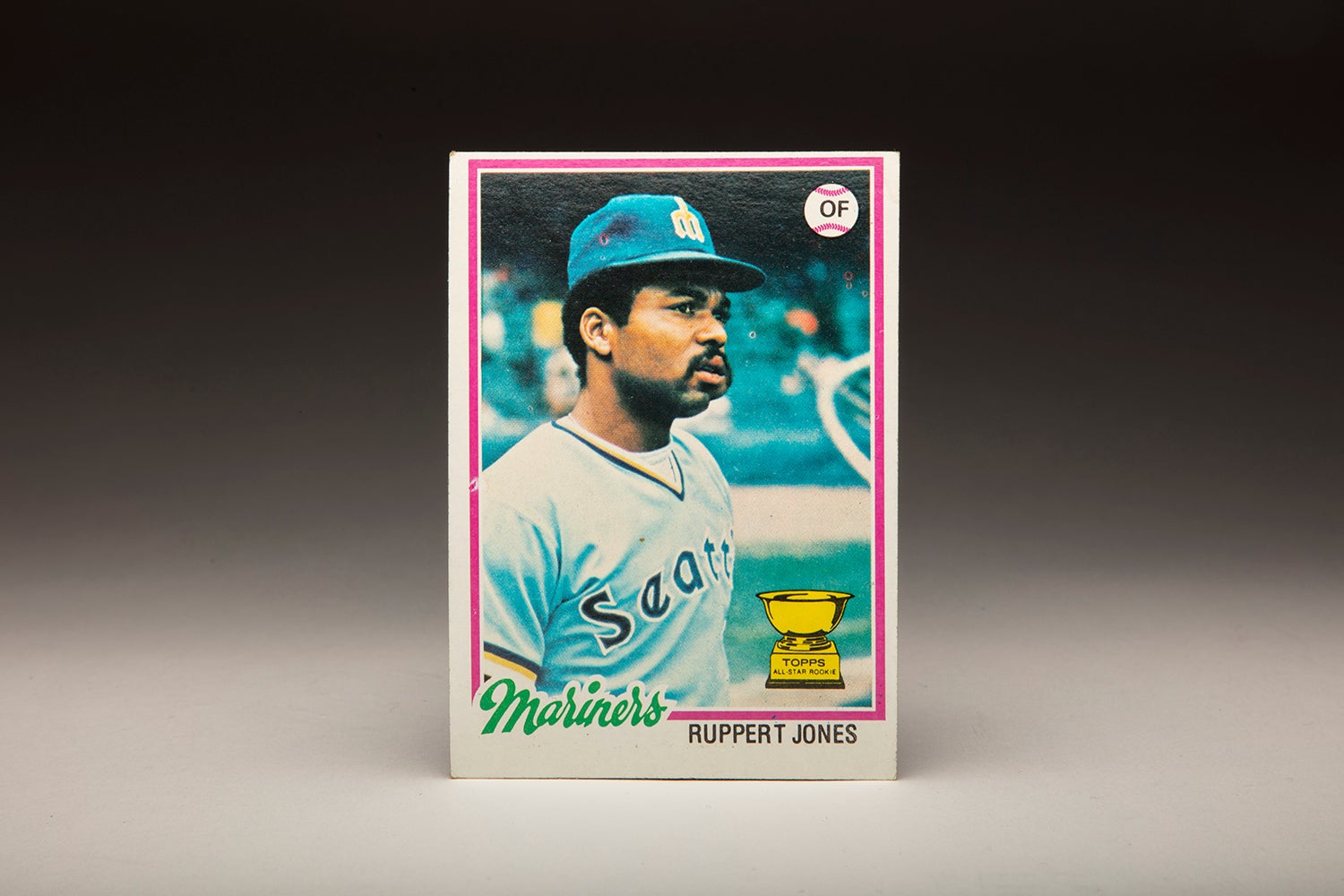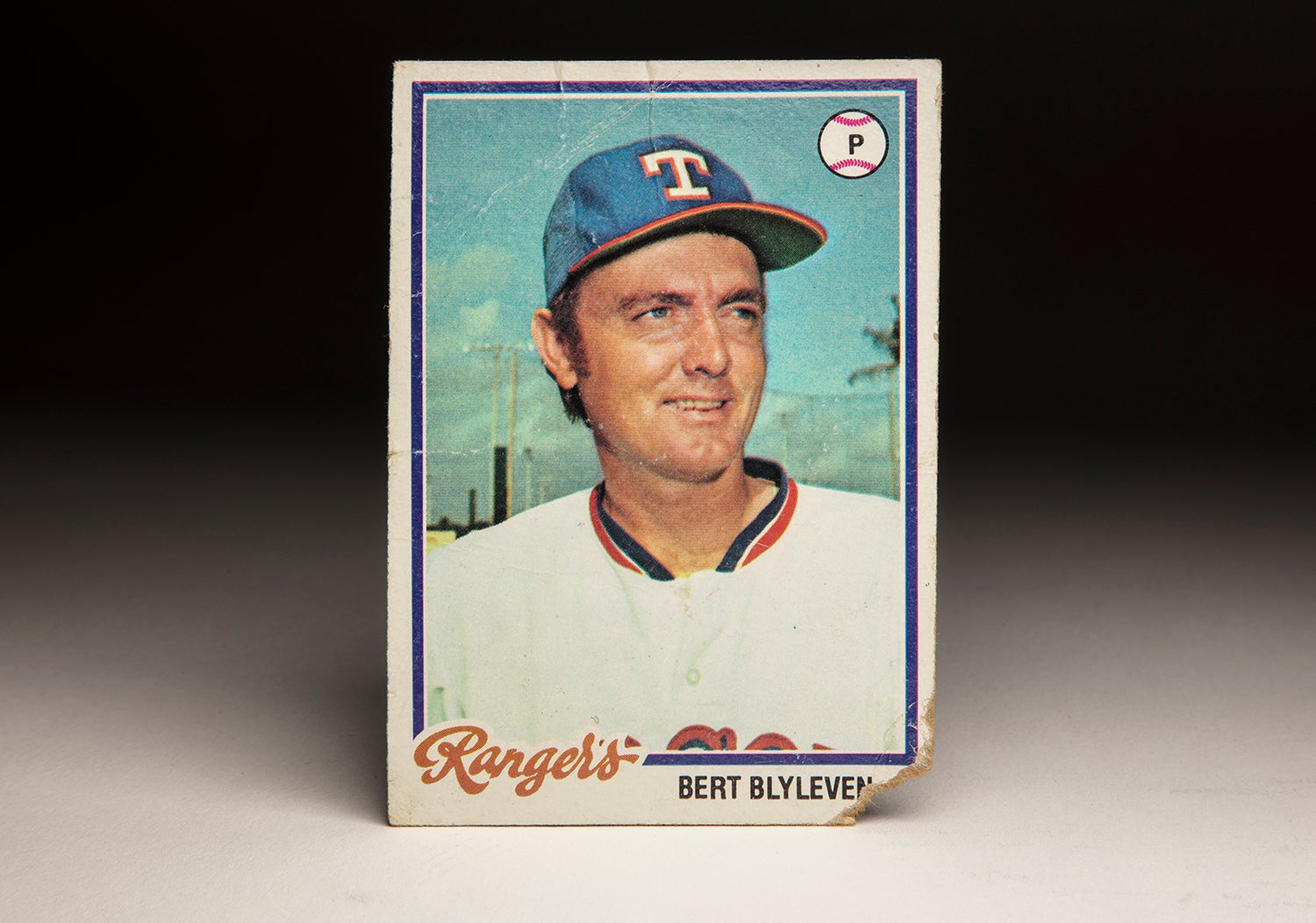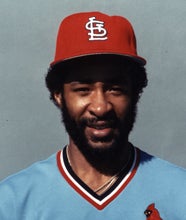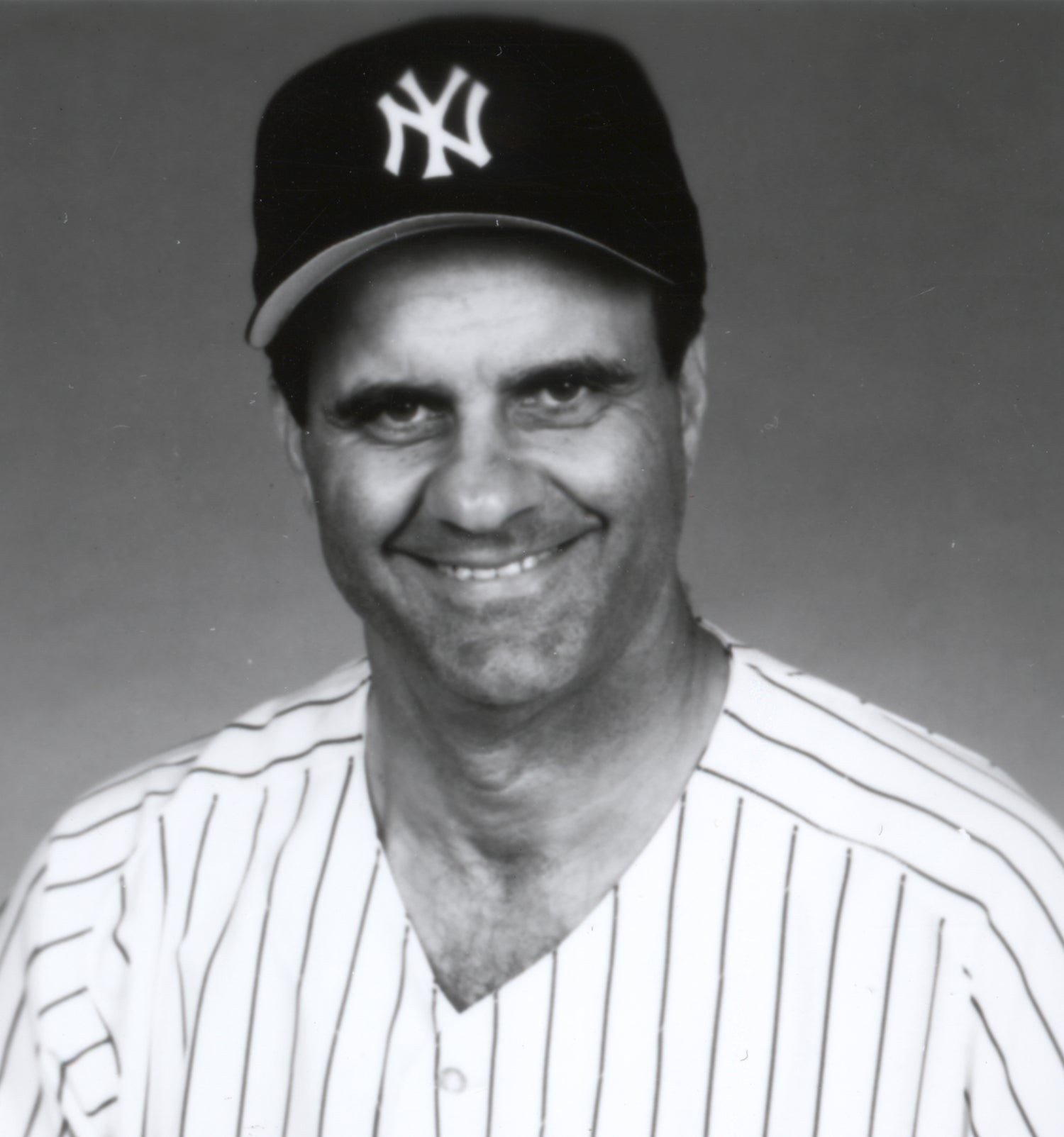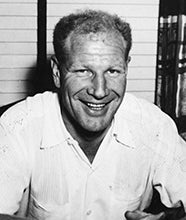- Home
- Our Stories
- #CardCorner: 1978 Topps Don Kessinger
#CardCorner: 1978 Topps Don Kessinger
On Aug. 2, 1979, Don Kessinger brushed up against baseball history – twice.
One encounter ended a tradition in the American League. The other began someone else’s journey to Cooperstown.
But Kessinger, a six-time All-Star shortstop, was much more than a footnote in the baseball narrative. For a time, Kessinger was one of the most highly regarded infielders in the game.
Born July 17, 1942, in Forrest City, Ark., Kessinger played his first 12 big league seasons with the Cubs and was a two-time Gold Glove Award winner at shortstop. In those same two seasons – 1969 and 1970 – Kessinger received votes in the National League Most Valuable Player Award race while reaching the 100-run scored mark in both seasons.
It was the peak of a playing career that began as an exceptional high school athlete and ended as the last player/manager in American League history.
Kessinger was a three-time all-state basketball player at Forrest City High School and was also all-state as a quarterback in football. After graduation, he enrolled at the University of Mississippi – located 125 miles from his home.
“I wanted to go to a school with a good baseball team as well as a good basketball program,” Kessinger told the Clarion-Ledger in Jackson, Miss.
In an era where freshman were not eligible for varsity athletics, Kessinger scored 152 points in his first four games with Ole Miss freshman basketball team. He earned All-American status in both basketball and baseball at Mississippi, leading the Rebels to the College World Series in 1964 during a season where he hit .432 as the Rebels’ shortstops. He even received a tryout offer with the NBA’s St. Louis Hawks.
But soon after the season ended, Kessinger signed with the Cubs. The deal, worth a reported $25,000, made headlines around the country in an Associated Press story that reported scouts from 11 big league teams making the trip to Forrest City to see Kessinger in the days before he signed.
The Cubs sent Kessinger to Fort Worth of the Double-A Texas League, where he hit .236 in 77 games. They brought him to Chicago after the minor league season ended, and Kessinger appeared in four games for the Cubs, going 2-for-12 at the plate.
Kessinger returned to the Texas League at the start of the 1965 season, this time hitting .285 with 20 stolen bases in 46 games. The Cubs recalled him in early June and put him at shortstop for the rest of the season, where he .201 in 106 games. But his defense and instincts convinced the Cubs’ brass that they had found their shortstop of the future.
“Don Kessinger is one of the main hopes of the Cubs for future success,” Cubs manager Lou Klein, who inserted Kessinger into the starting lineup when he took over as Chicago’s skipper midway through the season, told the Chicago Tribune. “Kessinger reminds me of Marty Marion the way he bends over in going after ground balls.
“I’m convinced that if he hits no more than .230, he’ll be a great asset to the Cubs.”
Kessinger allayed any concerns about his bat by hitting .274 in 150 games in 1966 for new manager Leo Durocher. A natural right-handed batter, Kessinger began experimenting with switch hitting before Spring Training began in 1966.
“I wanted to try switch hitting because I always hit left-handers better than right-handers,” Kessinger told the Pittsburgh Press.
Durocher encouraged the experiment early in the 1966 season, and Kessinger wound up with a .277 average against right-handers that season.
“He’s hitting to all fields, he’s bunting,” said Durocher, who had openly criticized Kessinger for being too relaxed at the start of the season. “He’s aggressive.”
In the field in 1966, Kessinger committed 35 errors but led all NL shortstops with 474 assists. It was the first of four times in a five-year stretch that Kessinger topped all NL shortstops in assists, peaking with an incredible 573 in 1968.
The 573 assists rank 10th all-time. Since the 1968 season, only Cal Ripken Jr. (583 in 1984) and Ozzie Smith (a big league record 621 in 1980) have more assists at shortstop in one season.
The Cubs lost 103 games in Durocher’s first season in 1966, but the future Hall of Fame manager turned things around a year later as Chicago improved by 28 wins to finish a surprising third in the National League. Kessinger, who hit .231 that season, was out of action in early July while serving a two-week stint in the Army Reserves – a span which coincided with a seven-game losing streak for the Cubs.
Kessinger made just 19 errors in 1967 en route to a .973 fielding percentage that was fourth among NL shortstops.
“I know one thing: Don had a tremendous year last season in the field,” Durocher told United Press International following the season. “He can really hound the ball. I know his average fell off, but I believe that was due to losing his timing while he served his two-week hitch in the Army.
“I don’t have any doubts about this kid’s hitting. I think he’ll be consistently around .270, and it could be more.”
Kessinger missed that mark in 1968, hitting .240 in the Year of the Pitcher. But his all-around play drew notice as he was named to his first All-Star Game and drew the starting assignment for the National League. The Cubs finished third once again, putting themselves in position for what appeared to be a great 1969 campaign.
But while Kessinger had his best season, the Cubs were left with heartbreak. Kessinger hit .273 with 181 hits, 38 doubles and 109 runs scored, once again starting the All-Star Game, earning his first Gold Glove Award with an NL-best .976 fielding percentage and eventually finishing in 15th in the NL MVP voting.
He set a new big league standard by playing in 54 straight games at shortstop without an error.
“You don’t really know how good he is unless you see him every day,” Cubs catcher Gene Oliver told the Clarion-Ledger. “Defensively, I’d take him over any shortstop in the league.”
The Cubs led the newly-formed NL East for much of the summer before losing 11 of 12 games in a September stretch that allowed the Mets to win the division.
Chicago finished second again in 1970 as Kessinger nearly duplicated his 1969 campaign with a .266 average, 100 runs scored, 168 hits, another All-Star Game start and another Gold Glove Award. But the aging Cubs seemed to have missed their championship window – and despite two more All-Star seasons from Kessinger in 1971 and ’72 (when he started his fourth All-Star Game), Chicago was unable to win the division.
Kessinger had what was for him a typical season in 1973 with a .262 batting average and league-leading totals in putouts (274) and double plays (109). But the Cubs fell below the .500 mark for the first time since 1966.
Kessinger continued his solid play in 1974 and 1975, earning his final All-Star Game selection in the former season and appearing in 140 games at shortstop in the latter – his 10th straight year with at least 140 games at short.
But with the Cubs entering a rebuilding phase, Chicago traded Kessinger to the Cardinals on Oct. 28, 1975 for pitcher Mike Garman and a minor leaguer. Kessinger, who as a 10-and-5 player had the right to block any trade, approved the deal to the team for whom he grew up rooting.
“I can do more to help a club now than at any time previously,” Kessinger told the St. Louis Post-Dispatch following the trade. “I know I can do anything on the field that I ever did.
“In the last two-and-a-half months of the (1975) season, I felt better at the plate than I ever did.”
But Kessinger hit just .243 in 1975. And while his 1976 season was similar – a .239 batting average with a .320 on-base percentage in 145 games – Kessinger knew his days in St. Louis were numbered due to the presence of top prospect Garry Templeton, who debuted with the Cardinals in August of 1976 and played most of the rest of the season at shortstop.
By 1977, Templeton was the Cardinals’ starter at short.
“You wait around all day, come to the ballpark and work hard in batting and infield practice and then wait all over again to get in the ballgame,” Kessinger told the Clarion-Ledger of his time with the Cardinals after Templeton took over the job. “All you can really do is tell yourself to be ready and handle it the best you can.”
On Aug. 20, 1977 – after appearing in just 59 games for the Cardinals that year – Kessinger was dealt to the White Sox for minor leaguer Steve Staniland. He appeared in 39 games down the stretch for the White Sox as Chicago completed a 90-72 campaign that saw them finish a surprising third in the AL West.
Kessinger regained his starting role in 1978, hitting .255 in 131 games – including 123 as the White Sox’s shortstop.
Then on Oct. 19, 1978, White Sox owner Bill Veeck announced that Kessinger would succeed Larry Doby as the White Sox’s manager while maintaining his status as a player.
At the time, player/managers were rare but not extinct, as Joe Torre had served as the Mets’ player/manager as recently as 1977. But the American League has not seen a player/manager since Kessinger, and only Pete Rose with the Reds from 1984-86 has been a player/manager in the National League in the years following Kessinger.
“It’s very difficult for me to replace Larry Doby,” Kessinger told the Associated Press. “It’s difficult for me to take over from a good friend. I didn’t solicit the job.
“I don’t know how much I’ll play. It all depends on what other players do. I expect the players to play hard. Those who don’t won’t play.”
The White Sox were gutted by free agent losses following their 90-win season in 1977 and finished 71-90 a year later. Kessinger skippered the team to 46 wins in 106 games before Veeck replaced him with future Hall of Famer Tony La Russa – who was managing the Triple-A Iowa Oaks – on Aug. 2, 1979.
“I think Sox fans would love for me to say I have a miracle with me that I brought from Iowa but I know that’s not going to be the case,” La Russa told the Associated Press the day he was hired. “I think sometimes a change of faces is helpful.”
Kessinger was removed from Chicago’s active roster – at his request – when he was dismissed as manager. He hit .200 in 56 games in 1979 but never played organized baseball again.
“I don’t really blame myself for what happened,” said Kessinger, who also told the Associated Press that he had no desire to manage again. “Nor do I think Bill Veeck blames me for what happened.”
Kessinger went on to become the head baseball coach at his alma mater in 1991, leading Mississippi to a 185-153 record over six seasons, including a 1995 NCAA Tournament berth. He stepped away from the job in the spring of 1996 to become an administrator at the university.
He finished his big league career with a .252 batting average, 1,931 hits and 899 runs scored over 16 big league seasons. His 6,212 assists rank 15th all-time among shortstops.
His son Keith Kessinger – who was also born in Forrest City, Ark., and played at the University of Mississippi – appeared in 11 games for the Cincinnati Reds at shortstop in 1993.
“I’ve been associated with a great many people,” Veeck told the Associated Press when he dismissed Kessinger, “but never with a man of more class or integrity.”
Craig Muder is the director of communications for the National Baseball Hall of Fame and Museum



